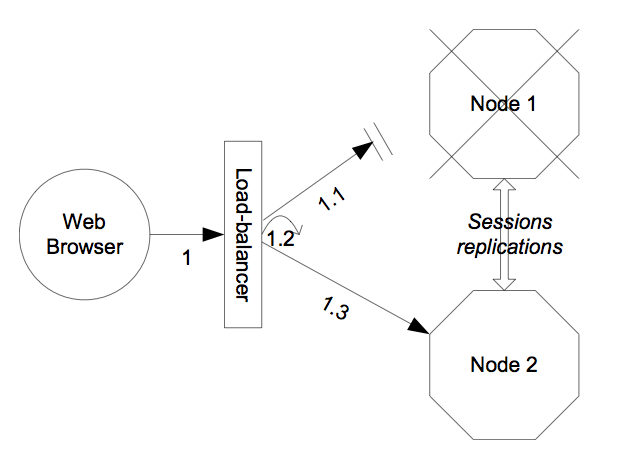Concept of Know-How
We as client use the Client Driver to connect with the DB, we develop the DB app and connect it with real DB with this client driver.
In my personal case, there is a Mongoose Driver for MongoDB using nodejs & SQLAlchemy Driver for MariaDB using python, and now it is time to use Cassandra DB Engine and its driver called 'datastax'.
In older version of C*, there remains the Hector && Astyanax and so on...(including Pycassa).
DataStax Driver
support by Python || C/C++ || Java
https://docs.datastax.com/en/landing_page/doc/landing_page/newDev.html
Config in Env for Dev
To install & load the driver and its dependencies in EnvPath. In case of Java, we use the Maven as Pkg Manager. And add some lines to its pom.xml files.
<dependency>
<groupId> com.datastax.cassandra </groupId>
<artifactId> cassandra-driver-core </artifactId>
<version> </version>
</dependency>
see ref doc, plz google github/datastax/java-driver || python-driver
-
Connection to Cluster
// create a cluster instance Cluster cluester = Cluster.builder().addContactPoint("127.0.0.5").build(); // to initialize the cluster instance cluster.init(); // it will call and trig the driver to make connection (any IP provided by client) // if the connection error or exception occurs, then it raises the NoHostAvailableException.
The DB app using the driver API to connect with C*'s Cluster, it belongs to com.datastax.driver.core.Cluster && class called Session.
The class called Cluster is the entry point, and it leads to the Fluent-Style API. (流式)
Session Instance by calling connect()
- use Sessions to make real connection with Cluster doing db operation
to create the session instance to do db pos
we can re-use one Session Instance to do many ops in a Life Cycle,due to High-Cost
it because of a session maintains all cluster nodes in the pool
Once an app covers many keyspaces, the session then will be created by keyspace to keyspace.
// create the cluster inastance then create a session instance
Session ss = cluster.connect(keyspaceInStringFormate);
// .connect() can be called instead of calling .init()
to create the session instance to do db pos
we can re-use one Session Instance to do many ops in a Life Cycle,due to High-Cost
it because of a session maintains all cluster nodes in the pool
Once an app covers many keyspaces, the session then will be created by keyspace to keyspace.
// create the cluster inastance then create a session instance
Session ss = cluster.connect(keyspaceInStringFormate);
// .connect() can be called instead of calling .init()
Sessions & Http_Limit_Requests
One connection build a session, and a session maintains all the only-one-connector for all the clusters nodes in the pool.
This only-one-connector allows many requests at the same time, the allows-many-requests means "http_limit_req",
see https://segmentfault.com/a/1190000004688125
seems like the graph below:
(to be continued...)
Prepared Statement (Reusage & Avoid SQL Injection), 預備敘述
UML
App or WebBrowser send Http_Requests ------> LB -----> Nodes in Pool using Cassandra Engine
create Prepared Statement using Session.prepare()
// create cluster instance and make session for nodes in pool (for a life cycle)
Cluster cluester = Cluster.builder().addContactPoint("127.0.0.5").build();
Session ss = cluster.connect('queens_cat'); // param passes the keyspace
// create insstance of PS
// pass param which is a SQL-statement
// Insert Into Field Value
PreparedStatement catFieldInsertPrepared = ss.prepare("INSERT INTO queens_cat(id, date) VALUE(?, ?) ");
// create insstance of PS
// pass param which is a SQL-statement
// Select all From Table WHERE key is __
PreparedStatement catFiledSeletPrepared = ss.prepare("SELECT * FROM queens_cat Where id=?");
PreparedID, 唯一識別符號
Notice : the class of PreparedStatement is not the child class from parent class called 'Statement'. Because of it, the Type Error will not occurs and TypeExeception will not be raised due to the PS make Type of passing Param avoids from mentioned error & exception.
// by calling its attrs to chek its ID of PS.
catFieldSelectPrepared.getPreparedID()
UML
App or WebBrowser send Http_Requests ------> LB -----> Nodes in Pool using Cassandra Engine
create Prepared Statement using Session.prepare()
// create cluster instance and make session for nodes in pool (for a life cycle)
Cluster cluester = Cluster.builder().addContactPoint("127.0.0.5").build();
Session ss = cluster.connect('queens_cat'); // param passes the keyspace
// create insstance of PS
// pass param which is a SQL-statement
// Insert Into Field Value
PreparedStatement catFieldInsertPrepared = ss.prepare("INSERT INTO queens_cat(id, date) VALUE(?, ?) ");
// create insstance of PS
// pass param which is a SQL-statement
// Select all From Table WHERE key is __
PreparedStatement catFiledSeletPrepared = ss.prepare("SELECT * FROM queens_cat Where id=?");
PreparedID, 唯一識別符號
Notice : the class of PreparedStatement is not the child class from parent class called 'Statement'. Because of it, the Type Error will not occurs and TypeExeception will not be raised due to the PS make Type of passing Param avoids from mentioned error & exception.
// by calling its attrs to chek its ID of PS.
catFieldSelectPrepared.getPreparedID()
Bound Statement, 限制敘述句
To Pass Value by calling bind()
catFiledSeletPrepared.BIND(318) # PASS VAL // 綑綁敘述句
binding Val
BoundStatement catFieldSelectBound = catFieldSelectPrepared.bind("poupou2018") // pass val by pass param using bind()
Set Its Attrs Val
catFieldSelectBound.setString("name", "queens poupou")
To Pass Value by calling bind()
catFiledSeletPrepared.BIND(318) # PASS VAL // 綑綁敘述句
binding Val
BoundStatement catFieldSelectBound = catFieldSelectPrepared.bind("poupou2018") // pass val by pass param using bind()
Set Its Attrs Val
catFieldSelectBound.setString("name", "queens poupou")
-
Plugin of Encyption (Cypher) and Authentication
create an instance using interface called com.datastax.driver.core.AuthProvider, and assign to Cluster.Builder.withAuthProvider() // create a auth instance AuthProvider auth_p // assign it to the Cluster.Builder.withAuthProvider() Cluster.Builder.withAuthProvider(auth_p) or I guess: using the below instance of custer cluster.Build.withAuthProvider(auth_p) // create a cluster instance Cluster cluester = Cluster.builder().addContactPoint("127.0.0.5").build(); // to initialize the cluster instance cluster.init(); // it will call and trig the driver to make connection (any IP provided by client) // if the connection error or exception occurs, then it raises the NoHostAvailableException. // if not able to pass the Auth, then it raises the AuthenticationException.
(to be continued...)
- Monitor
- Host
- Adjust
- Access MetaData
- Adress Translator
- Retry Policy
- Spec Execution
- LB Policy
(to be continued...)
(to be continued...)

